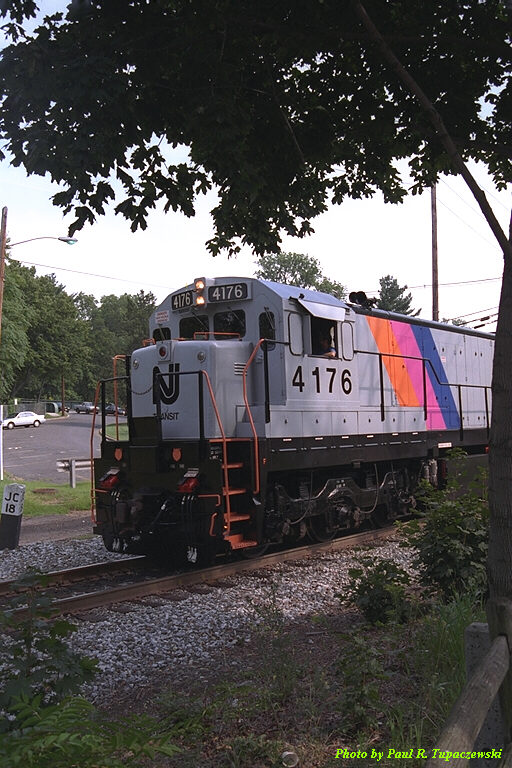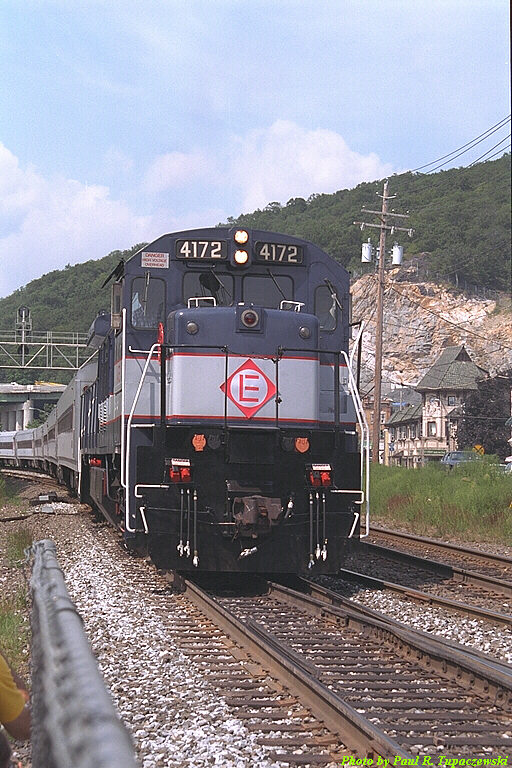Back in the 50s, Southern Pacific used Fairbanks Morse Train Masters (H24-66 models) on commuter trains. At the time - circa 1955 - these big, 6-axle, 2,400 HP diesels were the most powerful diesels on the market!

The railroad used them precisely because they had the horsepower to accelerate a train FAST. Getting back up to speed after a station stop was critical to maintaining a tight commuter schedule.
How that could be accomplished with notoriously slow-loading GE's is beyond me, but they must have worked OK for NJ Transit!
You're not kidding, Rich. Those F-M Train Masters out-ran anything else on the roster. Not only did they have full-field loading, but the Fairbanks-Morse opposed-piston diesel engine could rev up from Idle to Run-8 in about 3 seconds, so the generator was able to put out all the amperage the traction motors could take.
There were not enough of these wonderful locomotives to handle all of the Peninsula trains, and the others used mostly GP9's. There were also a pair of SD9's in Peninsula service. As fine an engine as the GP9 was, a pair of them at 3500 horsepower were no match for a 2400 horsepower Train Master. And let me say that the SD9's were wonderful mountain freight engines, but acceleration and speed were not their strong points. Of course, we have to note that the Train Masters were captive locomotives, serviced and repaired by the same shopmen at Bayshore or Lenzen Avenue (San Jose) roundhouses, and that was a part of the success of these particular Train Masters. The shopmen knew every one of the F-M's very well. They were used on freight on weekends, but -- once they found a home on Peninsula commuter trains -- that was where they worked Monday through Friday.
Southern Pacific was a railroad and NJT is a publicly-owned heavy rail transit agency. SP commuter trains served some old-money high rollers, many of whom were top executives of the railroad and of other corporations headquartered in San Francisco. The president of the Southern Pacific was quite likely to meet some of his well-heeled passengers at the Pacific Union Club, and I can guarantee that nobody involved in providing Peninsula passenger service wanted either Donald Russell or Benjamin Biaggini to hear any negative comments about service on his Peninsula commuter trains. Both Espee Presidents had notorious tempers. At NJ Transit, politics is a driving force, as it is on virtually all public transportation. Hardly anybody there has any idea of how to benchmark the skills required to get the performance and results that Southern Pacific did.







